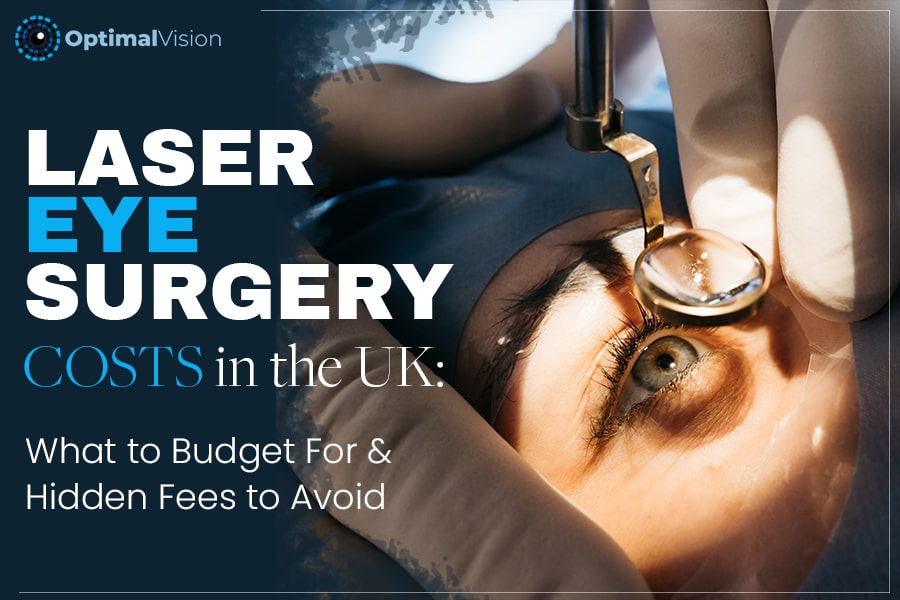Open six days a week - book a consultation with a specialist now - No Hidden Charges, No Pressure, Affordable

A recent study reveals that more than one billion people worldwide need eyeglasses, many of whom do not have access to vision correction. Furthermore, three out of every four adults require glasses or contacts
On the positive side, thanks to ever-evolving technology, there is no longer any need to lead a life with nearsightedness or long sightedness. There are numbers of safe and effective vision-correction treatments or procedures available, assures an ophthalmic surgeon in London.
Two most reliable invasive procedures to correct refractive errors are:
As one of the most popular types of laser eye surgery procedure, LASIK hardly needs any introduction. LASIK is the shortened form of Laser-Assisted in Situ Keratomileusis. As it is obvious from the name itself, the procedure makes use of the laser ray to reshape the cornea to fix refractive errors.
LASIK benefits a large number of patients including those suffering from farsightedness, nearsightedness and astigmatism. Successful LASIK eye surgeries reduce your dependency on glasses and contact lenses. In the majority of cases, it completely eliminates the need for glasses and contact lenses.
As you may know, LASIK is an elective surgery and is not covered by health insurance plans.
Many individual adults enjoy perfect vision until their mid 40s when they require reading glasses. These adults who never had to wear glasses require reading glasses now to make their way through daily activities like the newspaper or computer. The majority of these people think that LASIK is their only option but, a large number of people around the age of 47 and above are found to be unqualified for LASIK surgery.
RLE or refractive lens exchange is a procedure that replaces the natural lens of your eye permanently with an implants lens or IOL. This treatment is suitable for patients that experience vision changes because of the natural ageing of their eyes.
Lens replacement surgery is much more similar to that of a cataract. The difference lies in the fact that RLE replaces a clear lens while the cataract surgery replaces a lens that has already turned obscure or cloudy due to the formation of cataract.
While deciding on your lens replacement surgery, make sure to have a broad discussion with an ophthalmic surgeon. The qualified professional will consider all the relevant aspects to give you the most suitable solution.

Laser eye surgery can transform your day-to-day life in as little as 15 minutes, freeing you from glasses or contact lenses. But the big question for most peopl...
08 Oct 2025
Thinking about life without glasses or contact lenses? You’ve likely come across different types of laser eye surgery — the most common being LASIK,...
02 Oct 2025
A Comprehensive Guide LASIK surgery is a life-changing procedure that can free you from the constraints of glasses and contact lenses. At Optimal Vision, we...
13 May 2025
If you wear glasses or contact lenses, you’re all too familiar with the morning struggle. Your alarm rings, and before you can even begin your day, you&rs...
19 Mar 2025
Laser eye surgery has become a popular and effective solution for vision correction, helping millions of people worldwide to reduce or eliminate their dependenc...
25 Aug 2024
Laser eye surgery treatment will change the curvature of front part of the eye called cornea which help the vision to improve similar to contact lens correction...
27 Apr 2021
Everybody likes a bargain, whether that is in the January sales or a getaway at half the price. Saving money is a good feeling. Over the past few years there ha...
16 Mar 2021
Dealing with glasses or contact lenses have daily challenges with its inconvenience, like losing your glasses , heavy feeling over your nose missing them or eve...
17 Jan 2021
Laser eye surgery is a common vision correction, and although many people have undergone this surgery, there are several misconceptions and myths about this pro...
15 Jan 2021
The natural ageing process affects several areas of our lives. It may affect your near vision, making it difficult for you to focus on words while reading. It c...
06 Dec 2020
There are more options than you can count for your laser surgery in London. But when laser eye surgery is concerned it is important to think carefully about you...
19 Mar 2020
A recent study reveals that more than one billion people worldwide need eyeglasses, many of whom do not have access to vision correction. Furthermore, three out...
19 Feb 2020
Lens replacement surgery is a ground-breaking technology. The treatment not only corrects a large range of visual errors but also corrects the problem of catara...
05 Feb 2020
How safe is laser eye surgery? This is one of the most commonly asked questions that come from patients who are about to undergo the surgery. Laser eye surge...
29 Jan 2020
Laser eye surgery proves effective in fixing your vision problems among millions of people around the globe. A large number of these patients have achieved 20/2...
29 Dec 2019
Dr Mani has performed more than 35,000 ophthalmic procedures, including LASIK, LASEK, PRK, Femto Cataract, RLE, Lens ICL and Phakic IOL Surgery

We are recognised by most UK and international medical insurance providers.
Please call us to ask about private healthcare insurance.







